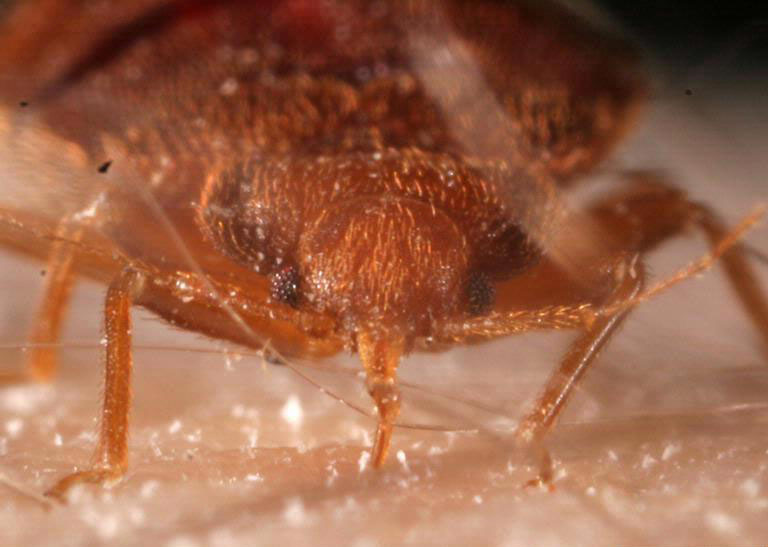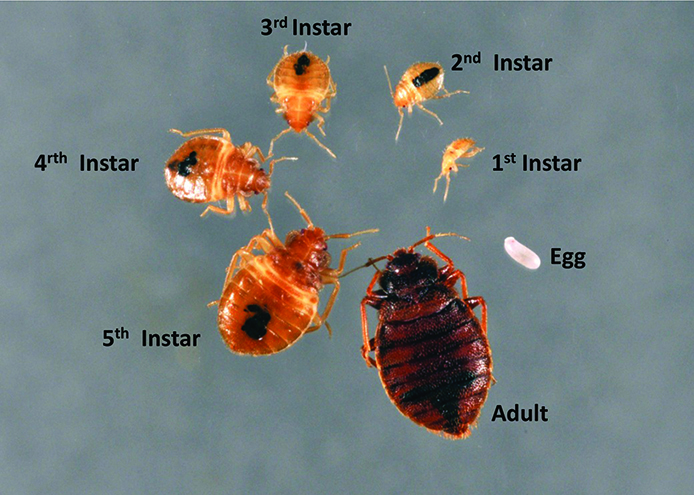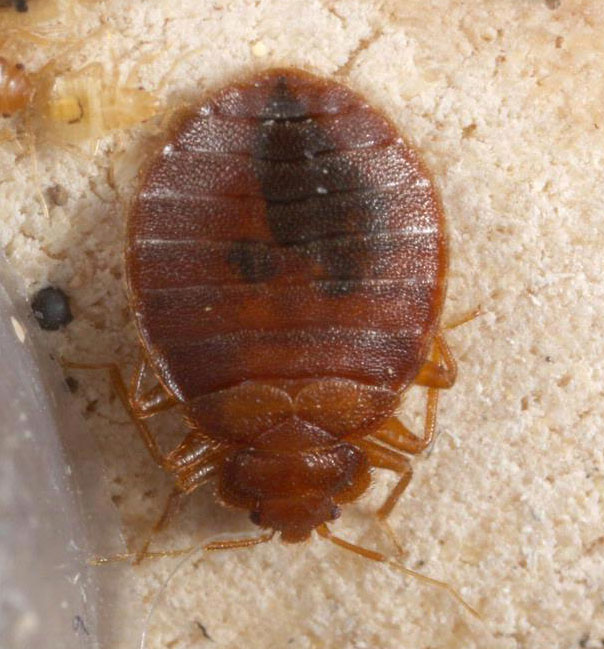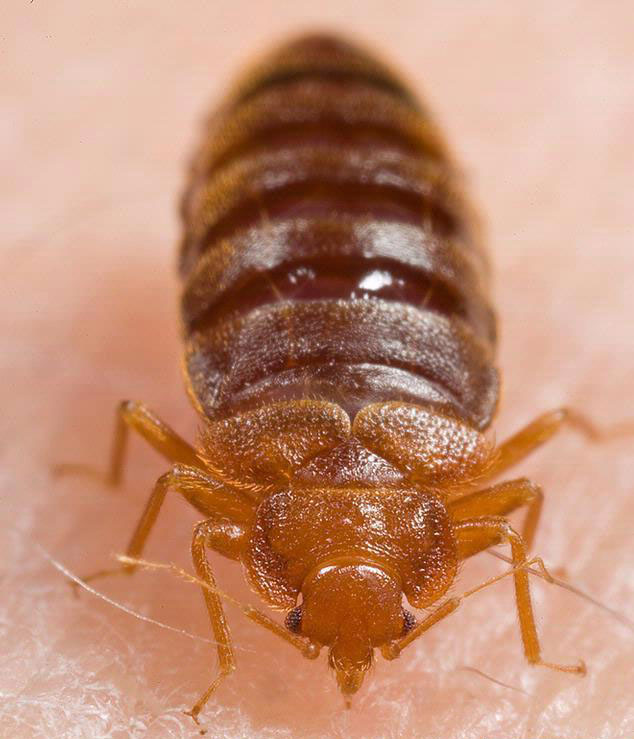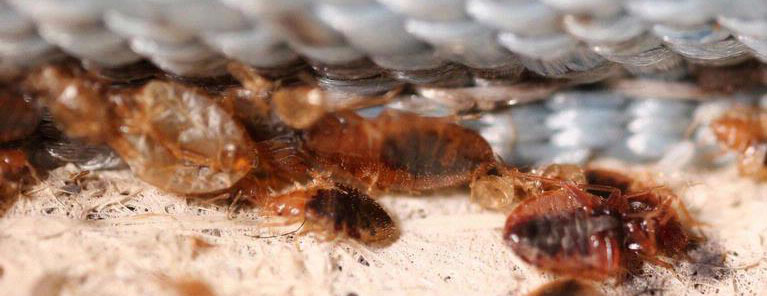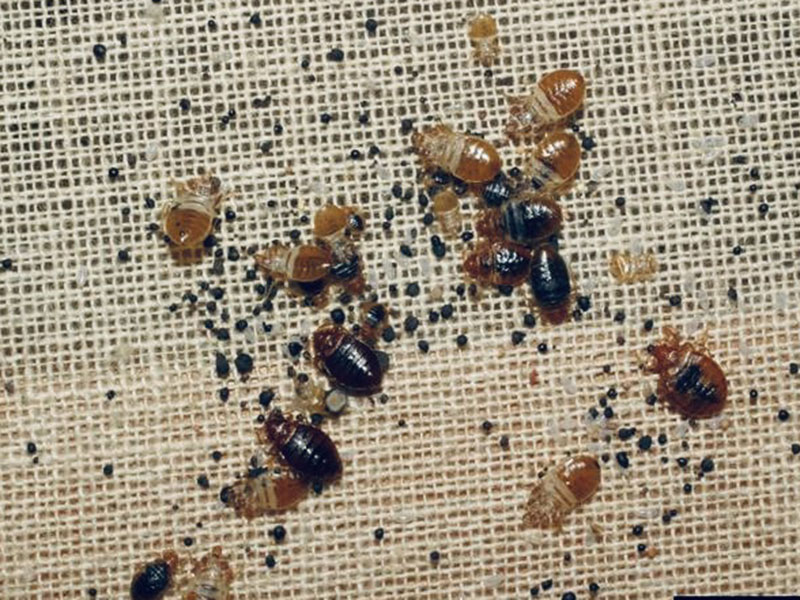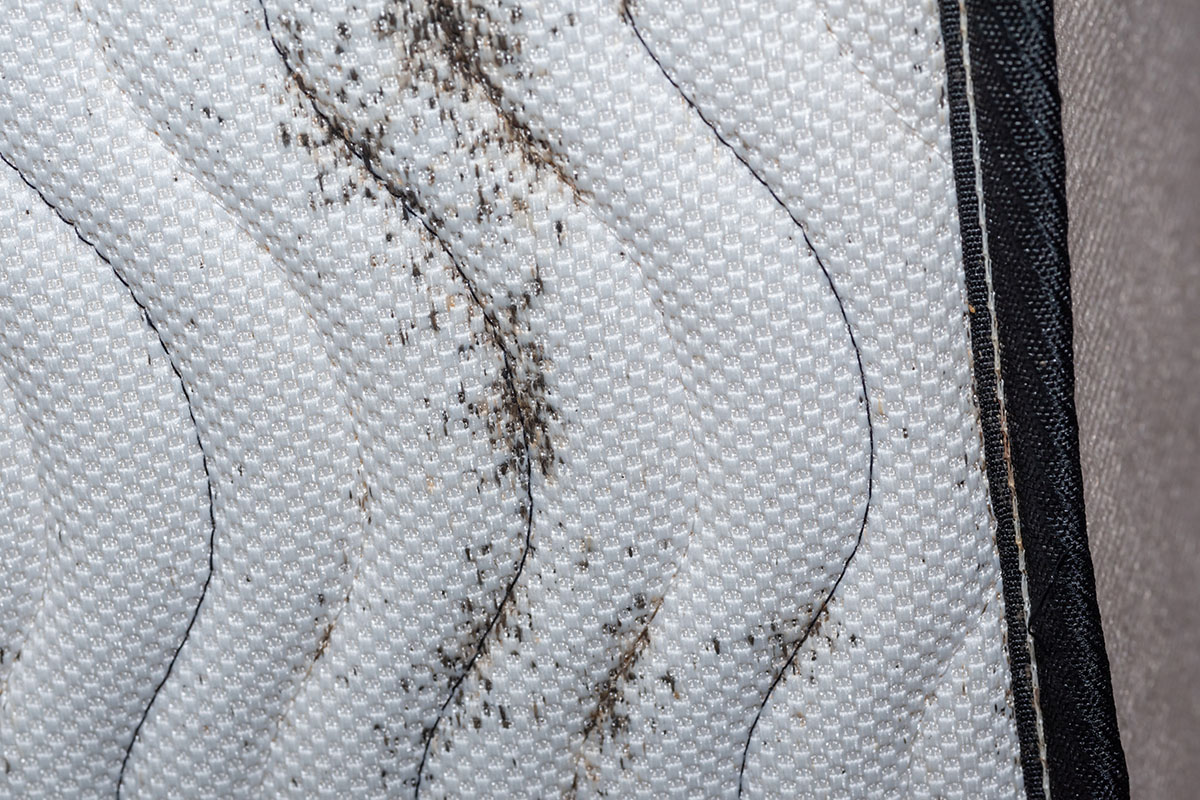Preventing Bed Bugs
Introduction
Bed bugs like to feed on humans! Bed bugs have several nicknames, including red coats, mahogany flats, wall lice, bed lice, night riders, wallpaper founders and crimson ramblers. By any name, they are a pest and generate concern when found infesting a home.
What do Bed Bugs Look Like?
Bed bugs are about the size and shape of an apple seed (Figure 1). Adult bed bugs are wingless, oval, flattened, red to dark brown and are about 1/5- to 3/8-inch long. Young bed bugs are smaller and are light tan or red (Figure 2). There are two other common species of blood feeding bugs, the bat bug and the swallow bug. They are closely related to bed bugs and look very similar. The presence of bat bugs is an indicator that bats are living in the house. Swallow bugs establish in the nests of their bird host and will invade a house once the birds have left the nest. It is important to have a suspected bed bug identified as a first step for control.
Figure 1. Bed bug. Photo credit: Gary Alpert, Harvard University, Bugwood.org
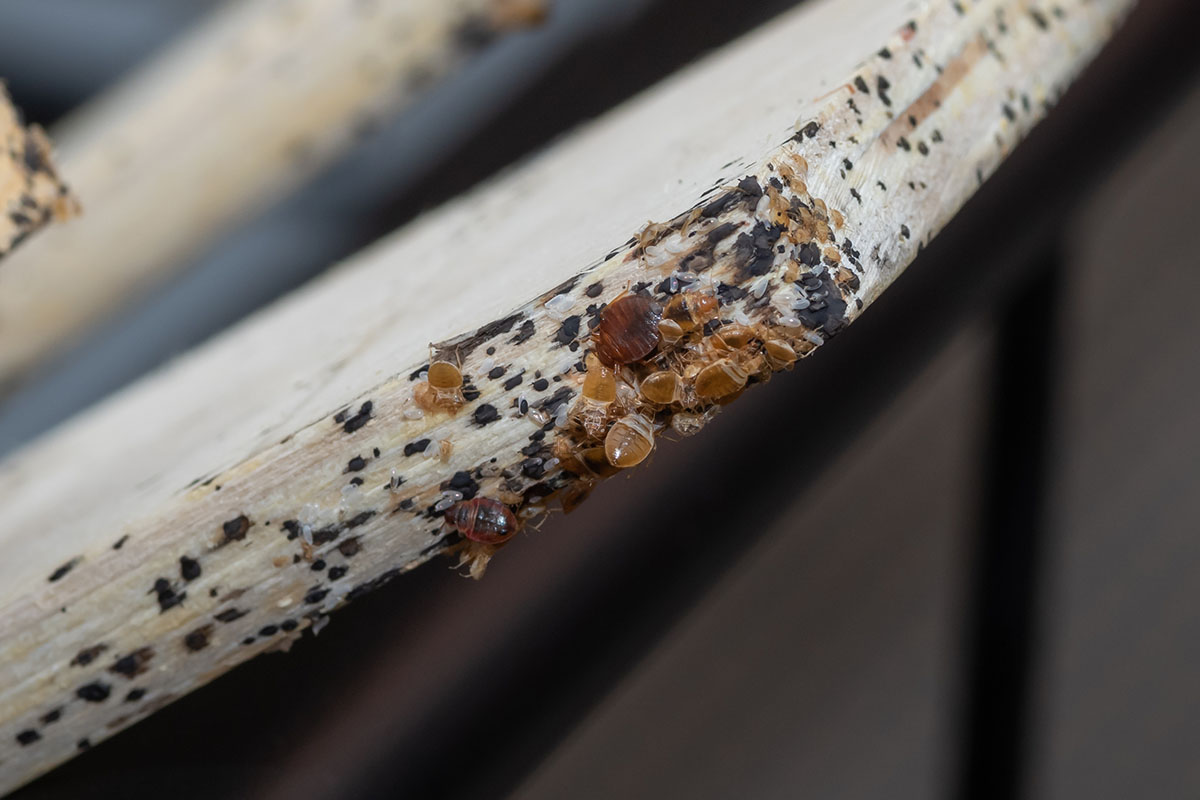
Why Do We Care?
Bed bugs need a blood meal to live and reproduce, and they feed almost exclusively on humans. They pierce human skin with a needle-like beak and then feed on blood (Figure 3). As a bed bug takes a full blood meal, its body darkens and its shape changes from being flattened to more cigar-shaped.
Figure 3. Bed bug feeding with needle-like beak.
Basic Bed Bug Biology
Bed bugs can reproduce rapidly. Females will lay one to five eggs per day, and one female can lay between 200-300 eggs over her lifetime. The eggs are white, about 1/32-inch long, and are covered with sticky glue that keeps them attached to the surface where they are laid. The eggs hatch in 3 to 10 days and then go through five growth periods called instars (Figure 4). Young, light tan bed bugs turn darker brown as they get older. They need a blood meal before they can molt from one growth period to the next. It takes between 21 to 120 days to grow from an egg to adult, depending on temperature, humidity and the availability of a blood source.
Figure 4. Bed bug life cycle. Photo credit: capitalk9pest.com
What if a Bed Bug Bites Me?
Bed bugs are a nuisance, but they do not transmit diseases. Bed bugs are nocturnal and feed while the person sleeps (Figure 5). They are attracted to the sleeping person’s body heat and the carbon dioxide the person exhales while breathing. The sleeping person rarely wakes while being bitten. Some people never show a physical reaction to bites on their skin, while others develop a rash or swelling as a result of bites. Some people who have been bitten frequently will become sensitized and stop having reactions. The fecal droppings from a blood meal may cause an allergic reaction in some people.
Figure 5. Before (top) and after (bottom) feeding. Photo Credit: Gary Alpert, Harvard University, Bugwood.org
Why Have I Heard a Lot about Bed Bugs Lately?
- In the U.S., populations declined dramatically during the 20th century when DDT and other residual insecticides were widely used in the home for control. Recently, pest control insecticides used in the home have changed from baseboard spray applications to baits to control ants and cockroaches. Very few pesticides are registered today for use in homes.
- Bed bugs are great hitchhikers. Increased international and domestic travel has spread the problem. They can easily hide in suitcases, backpacks and clothing.
- Bed bugs are difficult to eliminate once established in a home. They will hide on beds (box springs, mattress and behind the headboard). They can also hide behind pictures on walls, phones, electrical outlets, sofas and even in phones!
Prevent Bed Bugs While Traveling
Do you like to travel? So do bed bugs! Bed bugs cannot fly or jump; they travel by crawling. But they are fast moving! A few simple steps can help you avoid picking up these unwanted passengers while traveling. Start by checking your hotel room before you “move in.”
At the hotel, be sure to search carefully!
- In heavily infested rooms, you might smell an obnoxious, sweet, musty odor that has been described as smelling like rotten raspberries and/or moldy shoes. The smell is often strongest under the headboard and mattress. Smell something funny? Ask for another room.
- Put your luggage in the clean, dry bathtub.
- Most bed bugs hide within 15 feet of the bed. Search the top part of the bed. Pull back the blankets, sheets and mattress pad (Figure 6). Search for any signs of infestation, including eggs, bugs, blood or black fecal spots (Figure 7). They are not as likely to be at the bottom of the bed.
- Once you’ve searched the bed, search the luggage rack. Pull back the straps and look for any signs of bugs on and under the straps.
- Once you’ve inspected the room and the luggage rack, take your luggage from the bathroom and set it on a hard surface. Place your luggage on the desk or the luggage rack. Never set your suitcase on the bed.
- Upon returning home, take your suitcase to the washing machine. Immediately wash and dry all clothing. Take your suitcase outside and clean the interior and pockets, searching for any evidence of bed bugs.
Figure 6. Bed bugs hiding under a mattress. Photo Credit: Gary Alpert, Harvard University, Bugwood.org
Figure 7. Bed bugs leave black fecal spots on fabric. Photo Credit: Barbara Bloetscher, The Ohio State University, Bugwood.org
Prevent bed bugs while second-hand shopping
Bed bugs are spread when people bring infested, used furniture into the home. Do not take used furniture from curbs or dumpsters. This furniture could have been thrown away because of bed bugs (Figure 8)! Be very cautious if purchasing used furniture or renting furniture. Inspect any used household furniture item that you bring into your home. It is a good idea to clean these items as well.
Figure 8. Bed bugs in used furniture.
Keep your friends and family from bringing bed bugs into your home
Are your friends or family struggling with bed bugs? Refer them to the local county Extension office.
Just remember … prevention is best!


